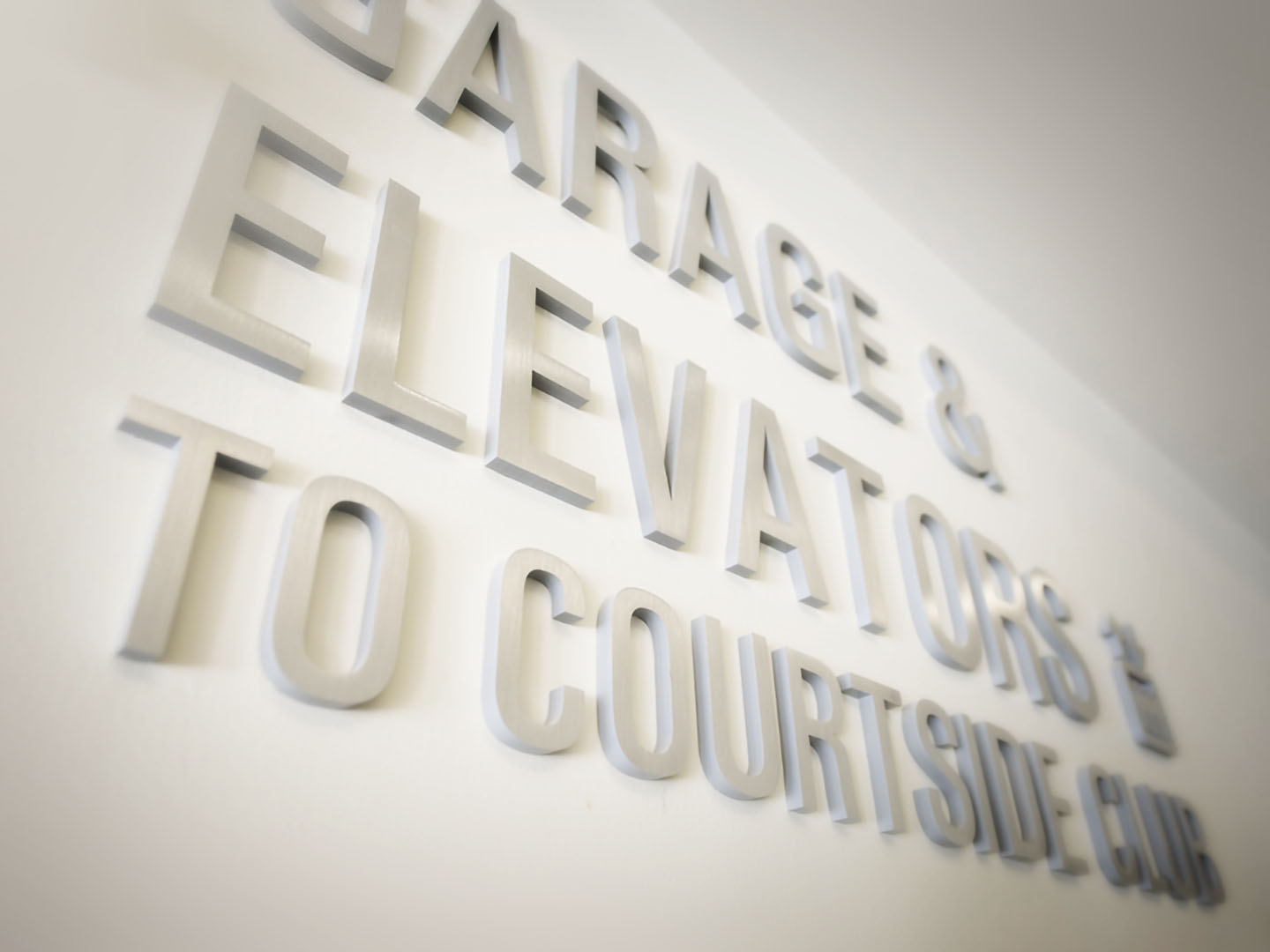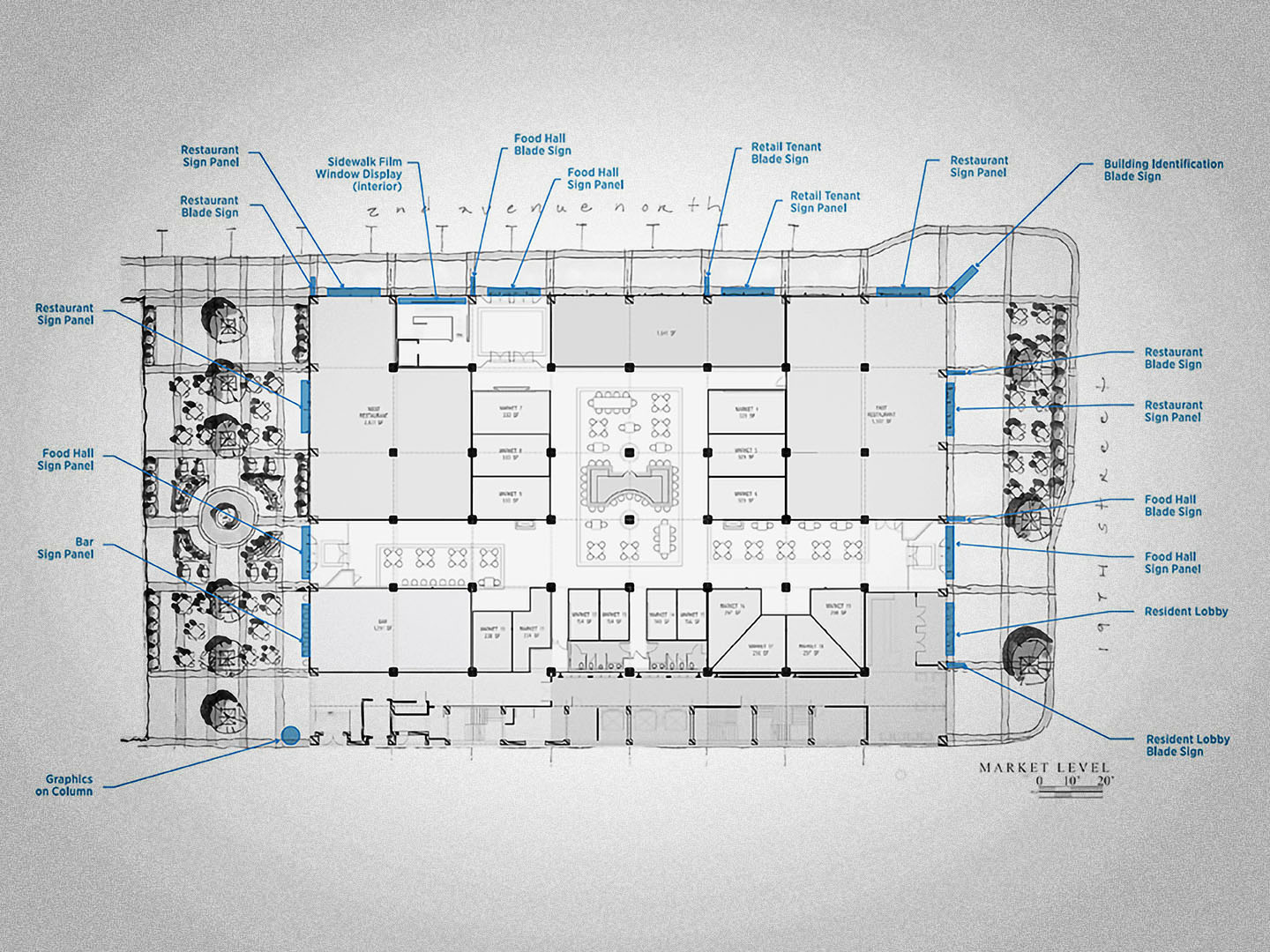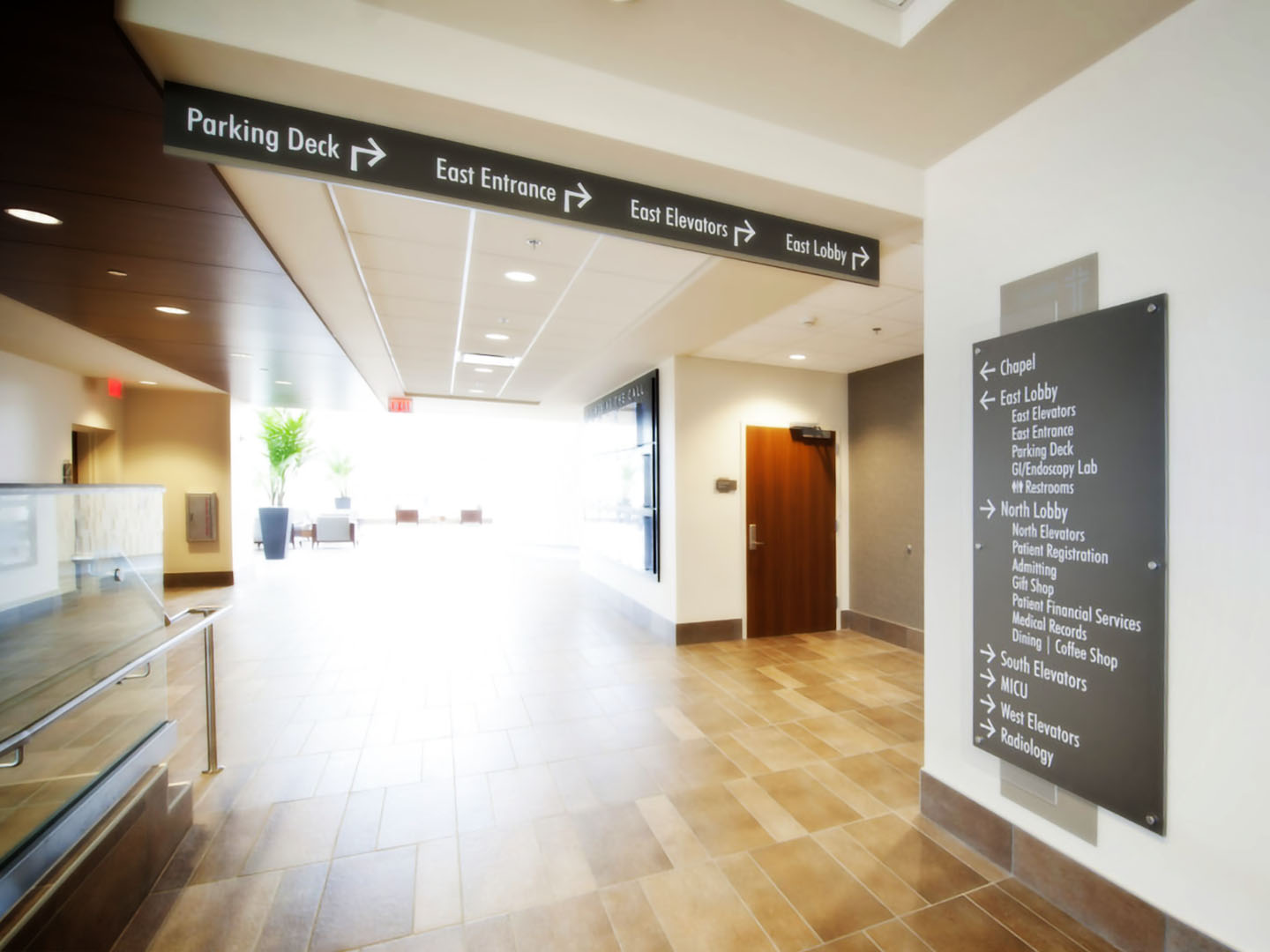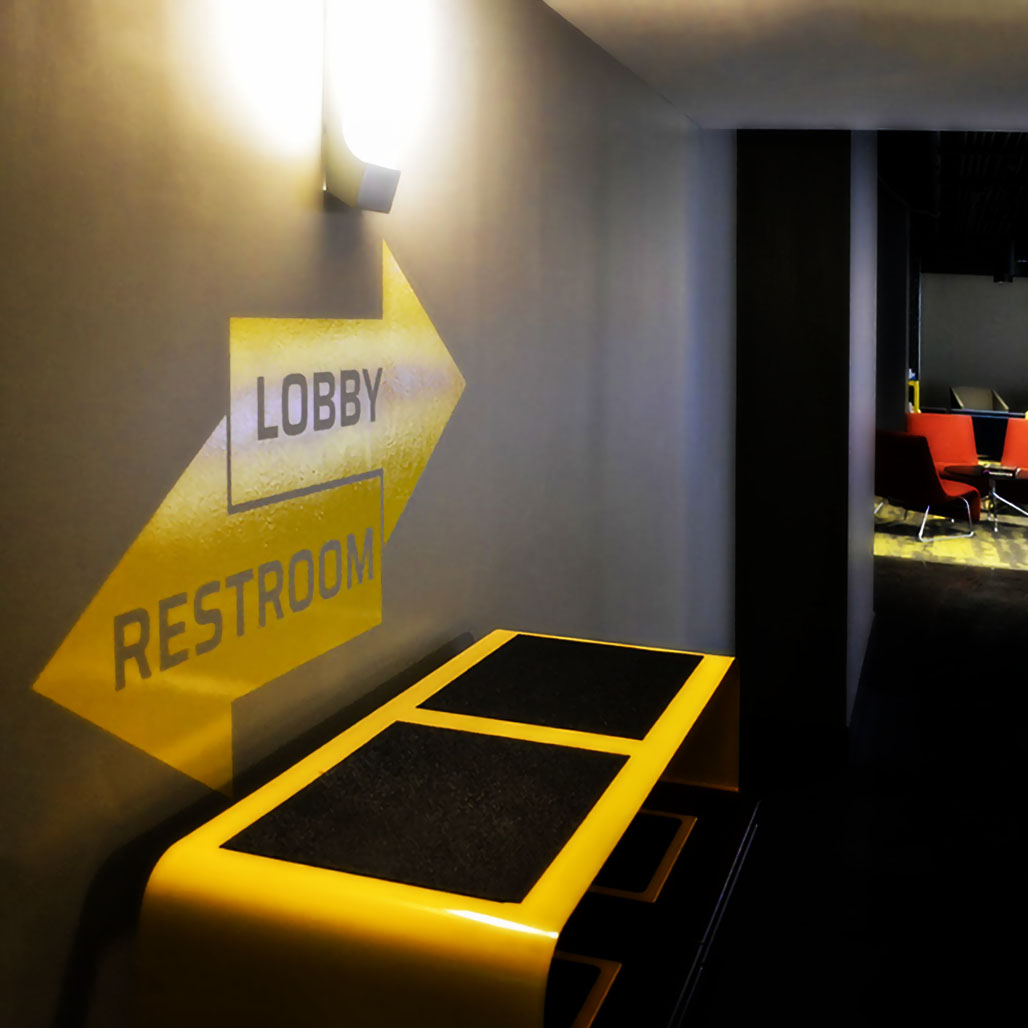Our experience allows us to guide our clients through this process.
Like some individuals, facilities can be directionally challenged, whether it be the general architecture or additions to the facility over time that have created difficulty in navigation. However, there are several key principles to keep in mind when developing an effective wayfinding plan:
Our experience allows us to guide our clients through this process.
Like some individuals, facilities can be directionally challenged, whether it be the general architecture or additions to the facility over time that have created difficulty in navigation. However, there are several key principles to keep in mind when developing an effective wayfinding plan:




